Best Castle Towns and Samurai Districts in Japan: Top Spots to Explore
Japanese castles and samurai spots are not just remarkable remnants of the past; they embody Japan’s deep history, cultural evolution, and architectural brilliance. From the Sengoku period to the Edo period, these castles and their surrounding towns served as centers of power, defense, and governance, while samurai played a key role in shaping their development. Whether you’re a history enthusiast, fascinated by the samurai way of life, or simply eager to immerse yourself in Japan’s feudal legacy, these places offer a captivating journey into the country’s rich past, where stunning fortresses and samurai culture coexist harmoniously.

On this page, you’ll explore the history, the structure of these castles, and the top castles in Japan, including essential visitor information like ticket prices and how long to spend at each site.
On this site, you can find:
History and Importance of Japanese Castles and Samurai Spots
Japanese castles and samurai towns are not just remarkable remnants of the past; they embody the nation’s deep history, cultural evolution, and architectural brilliance. From the Sengoku period to the Edo period, these castles and their surrounding towns were centers of power, defense, and governance, while samurai played a key role in shaping their development. Castles were often built by samurai lords, who used them as both strategic military strongholds and symbols of their authority. The towns surrounding these castles were key sites of samurai culture, where these warriors once lived, worked, and governed.
Whether you’re fascinated by the iconic castles or captivated by the samurai lifestyle, these locations offer a unique opportunity to step back in time and immerse yourself in Japan’s feudal legacy. Visitors can explore not only the grandeur of the castles but also the traditional streets and buildings of the samurai districts, each telling a story of honor, power, and warfare that shaped modern Japan.
Notable Castles and Samurai Spots
1. Himeji Castle – Known as the “White Heron Castle,” it is Japan’s most iconic and well-preserved castle.
2. Matsumoto Castle – Famous for its black exterior, this is one of Japan’s oldest surviving castles.
3. Kumamoto Castle – A grand castle that showcases traditional Japanese defensive architecture.
4. Osaka Castle – A historic symbol of Osaka, famous for its beautiful park and panoramic views.
5. Nagoya Castle – Known for its golden roof ornaments and historic significance during the Edo period.
6. Nijo Castle – A UNESCO World Heritage Site in Kyoto, famous for its nightingale floors.
7. Hikone Castle – A rare original castle that offers a glimpse into Japan’s feudal past.
8. Okayama Castle – Often called “Crow Castle” for its dark exterior, it’s located near Korakuen Garden.
9. Sendai Castle – The ruins of a powerful castle offering great views of Sendai City.
10. Takamatsu Castle – Known for its scenic location by the Seto Inland Sea and beautiful gardens.
11. Kanazawa Castle – A beautifully preserved castle that once served as the Maeda clan’s home.
12. Maruoka Castle – One of Japan’s oldest castles, known for its unique “Crowning Roof.”
13. Fukuyama Castle – A reconstructed castle with stunning views and a lovely cherry blossom park.
14. Matsuyama Castle – A well-preserved hilltop castle offering panoramic views of the city.
15. Imperial East Gardens (Tokyo) – The remains of the former Edo Castle, featuring beautiful gardens and moats.
Notable Samurai Towns and Spots
- Hagi – A Samurai Town by the Sea
Known for its well-preserved samurai district, historic residences, and role in the Meiji Restoration. - Kakunodate – The Little Kyoto of the North
Renowned for its preserved samurai district and stunning cherry blossoms in spring. - Matsumoto – The Black Crow Castle
Home to Matsumoto Castle, one of Japan’s oldest and most stunning original castles, with a surrounding samurai-era town. - Aizu-Wakamatsu – The Last Samurai Stronghold Famous for Tsuruga Castle and its samurai legacy, particularly from the Boshin War era.
- Hirosaki – Samurai Town of the North
Known for Hirosaki Castle and its beautiful samurai district, especially during cherry blossom season. - Kumamoto – The Castle of the Stronghold
Home to Kumamoto Castle, one of Japan’s most impressive samurai fortresses with a rich warrior history. - Shimonoseki – Site of Samurai Battles
Historically significant for its role in the Battle of Dannoura and other key samurai-related events.
Himeji Castle: The White Heron of Japan
Known for its striking white exterior, Himeji Castle is one of the most well-preserved and spectacular castles in Japan. Often referred to as the White Heron Castle due to its elegant and bird-like appearance, it played a significant role in the Sengoku period and later as a symbol of power during the Edo period.
- Location: Himeji City, Hyogo Prefecture
- How long to spend: 2-3 hours
- Ticket price: ¥1,000 for adults, ¥300 for children

Matsumoto Castle: The Black Crow Castle
Matsumoto Castle, also known as the Black Crow Castle, is famous for its striking black exterior and its complete preservation. It’s one of the oldest castles in Japan, dating back to the late 16th century. Its distinctive hirajiro (flatland castle) style gives it a unique charm, combining defense and aesthetics.
- Location: Matsumoto City, Nagano Prefecture
- How long to spend: 1-2 hours
- Ticket price: ¥610 for adults, ¥300 for children
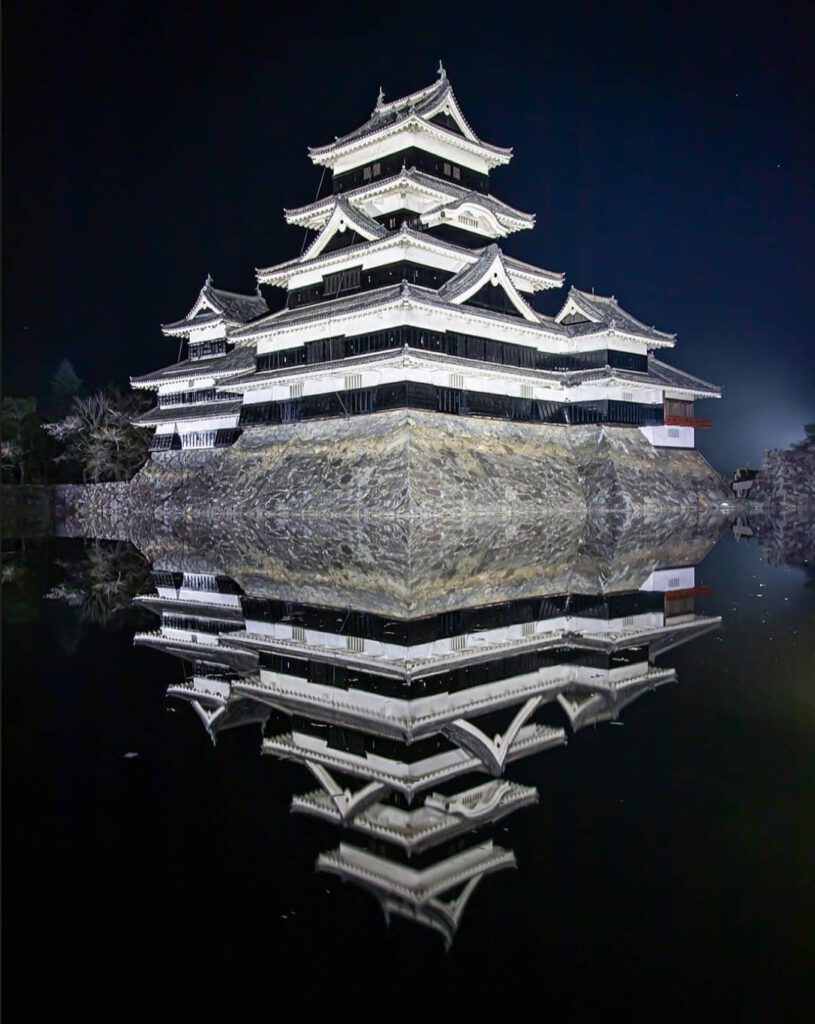
Kumamoto Castle: The Castle with a Legendary Past
Kumamoto Castle is one of Japan’s most famous castles, known for its grand structure and its role in the Satsuma Rebellion. It survived many battles, and though it was damaged in the 2016 Kumamoto earthquake, it remains a symbol of resilience and strength.
- Location: Kumamoto City, Kumamoto Prefecture
- How long to spend: 2-3 hours
- Ticket price: ¥500 for adults, ¥200 for children
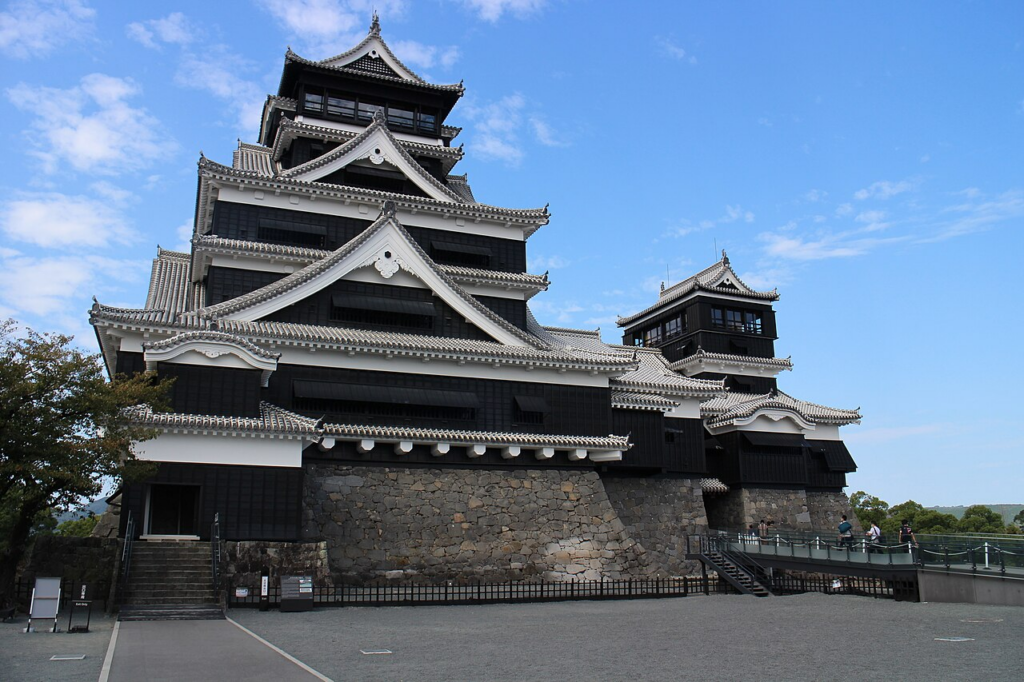
Osaka Castle: A Fortress of Power and Influence
Standing as a symbol of Japan’s unification, Osaka Castle was originally built by Toyotomi Hideyoshi in the late 16th century. The castle has been rebuilt over time and is now one of Japan’s most visited sites, offering a museum and panoramic views of the surrounding area.
- Location: Osaka City, Osaka Prefecture
- How long to spend: 1-2 hours
- Ticket price: ¥600 for adults, ¥200 for children
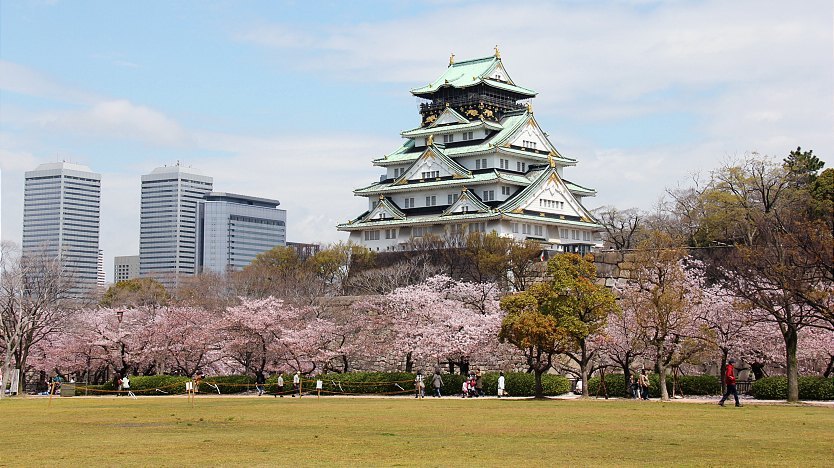
Nagoya Castle: Where History Meets Grandeur
Nagoya Castle is renowned for its majestic shachihoko (golden ornaments on the roof) and elegant design. Built by the Tokugawa family during the Edo period, it has been restored and serves as a significant symbol of power and beauty.
- Location: Nagoya City, Aichi Prefecture
- How long to spend: 1-2 hours
- Ticket price: ¥500 for adults, ¥100 for children
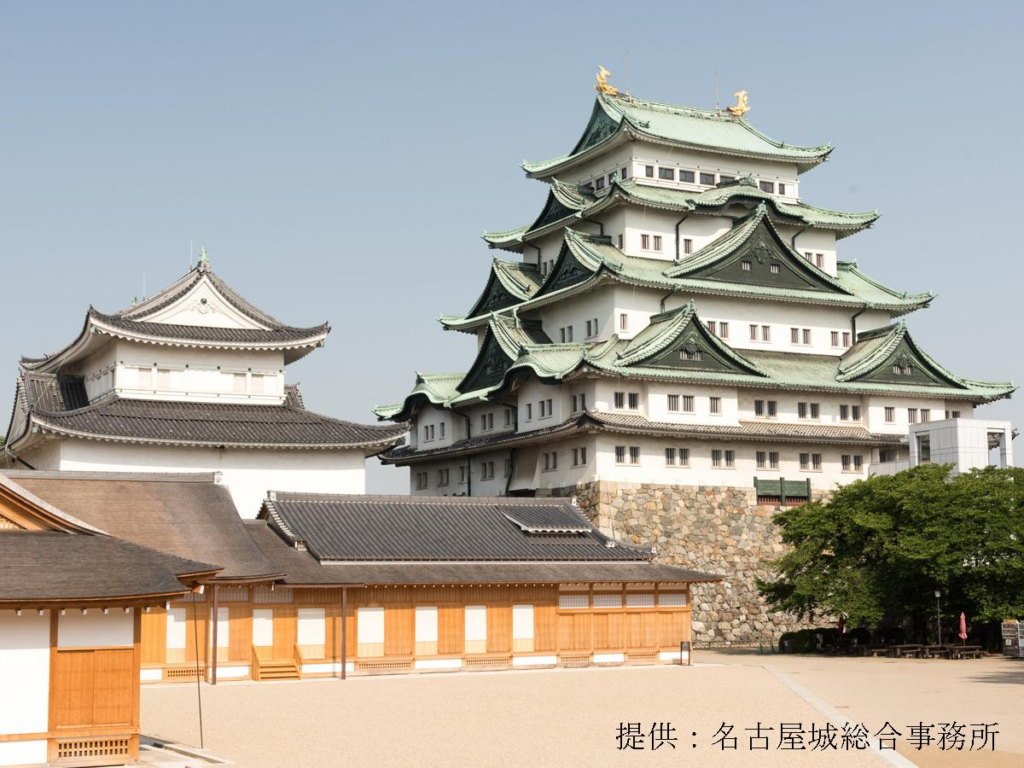
Nijo Castle: The Castle of the Shogun
Famous for its Ninomaru Palace, Nijo Castle was built as a residence for Tokugawa Ieyasu, the first shogun of the Edo period. The castle is renowned for its nightingale floors, which chirp when walked upon as a security measure.
- Location: Kyoto City, Kyoto Prefecture
- How long to spend: 1-2 hours
- Ticket price: ¥1,000 for adults, ¥400 for children

Hikone Castle: A Perfectly Preserved Treasure
Hikone Castle, located on the shores of Lake Biwa, is one of Japan’s oldest castles and is well-preserved with its original keep intact. The castle provides a glimpse into Japan’s past and offers stunning views over the lake and surrounding countryside.
- Location: Hikone City, Shiga Prefecture
- How long to spend: 1-2 hours
- Ticket price: ¥800 for adults, ¥200 for children

Okayama Castle: The Crow Castle
Okayama Castle, also known as the Crow Castle, features a striking black exterior similar to that of Matsumoto Castle. The current structure was reconstructed after being destroyed in World War II, but it retains the historical charm of a classic Japanese fortress.
- How long to spend: 1-2 hours
- Ticket price: ¥300 for adults, ¥150 for children
- Location: Okayama City, Okayama Prefecture
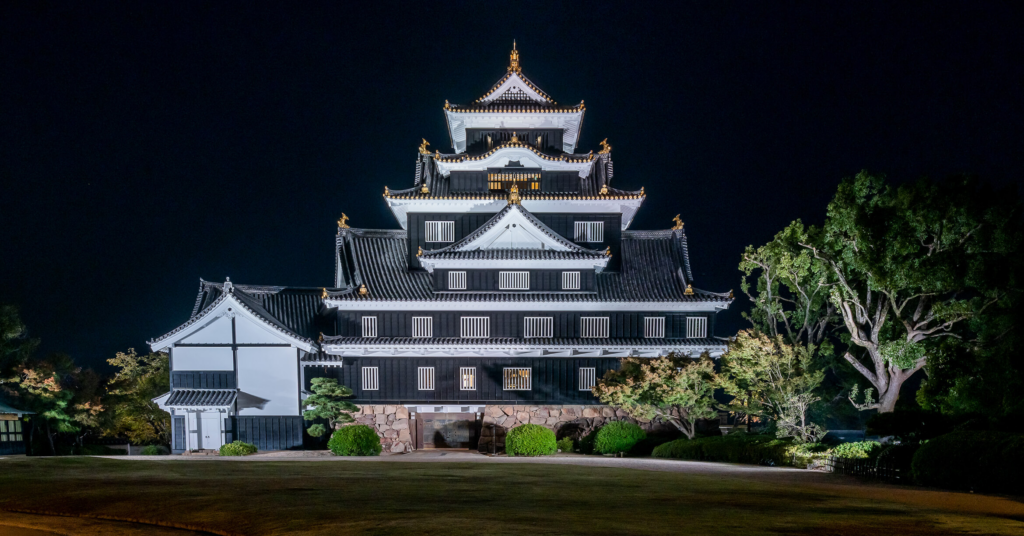
Sendai Castle: The Castle of the Date Clan
Sendai Castle, once home to the Date clan, offers breathtaking views of the city below. While much of the castle has been lost to time, the remains of the tenshukaku (main tower) and the beautiful surrounding park are still well worth a visit.
- Location: Sendai City, Miyagi Prefecture
- How long to spend: 1-2 hours
- Ticket price: ¥300 for adults, ¥150 for children

Takamatsu Castle: The Water Castle
Built by the Ikoma clan, Takamatsu Castle is famous for its moat, which fills with water during the rainy season, creating a dramatic effect. The castle’s layout is unique in that it is built on flat land surrounded by water, offering a scenic view.
- Location: Takamatsu City, Kagawa Prefecture
- How long to spend: 1-2 hours
- Ticket price: ¥200 for adults, ¥100 for children

Kanazawa Castle: A Historical Gem
Kanazawa Castle was the seat of the powerful Maeda clan. The site offers beautifully restored structures, including the tenshukaku, and stunning gardens. Kanazawa Castle is a wonderful example of both feudal history and architectural design.
- How long to spend: 1-2 hours
- Ticket price: ¥310 for adults, ¥100 for children
- Location: Kanazawa City, Ishikawa Prefecture

Maruoka Castle: The Oldest Castle in Japan
Maruoka Castle is Japan’s oldest surviving tenshukaku (castle tower). It has remained largely unchanged since the 16th century, offering visitors a rare glimpse of medieval Japanese architecture.
- Location: Maruoka, Fukui Prefecture
- How long to spend: 1 hour
- Ticket price: ¥150 for adults, ¥70 for children

Fukuyama Castle: The Samurai Fortress
Originally built in the early 17th century, Fukuyama Castle is well known for its grand design and historical significance. Though much of the original structure was destroyed, the main keep has been reconstructed and provides insight into its former glory.
- Location: Fukuyama City, Hiroshima Prefecture
- How long to spend: 1-2 hours
- Ticket price: ¥200 for adults, ¥100 for children

Matsuyama Castle: A Castle with a View
Perched atop a hill, Matsuyama Castle offers breathtaking views of the city below. It is one of the most famous castles in the Shikoku region and boasts one of Japan’s best-preserved keeps.
- Location: Matsuyama City, Ehime Prefecture
- How long to spend: 1-2 hours
- Ticket price: ¥510 for adults, ¥150 for children

Imperial East Gardens (Tokyo)
Park on the former grounds of Edo Castle
Location: Tokyo
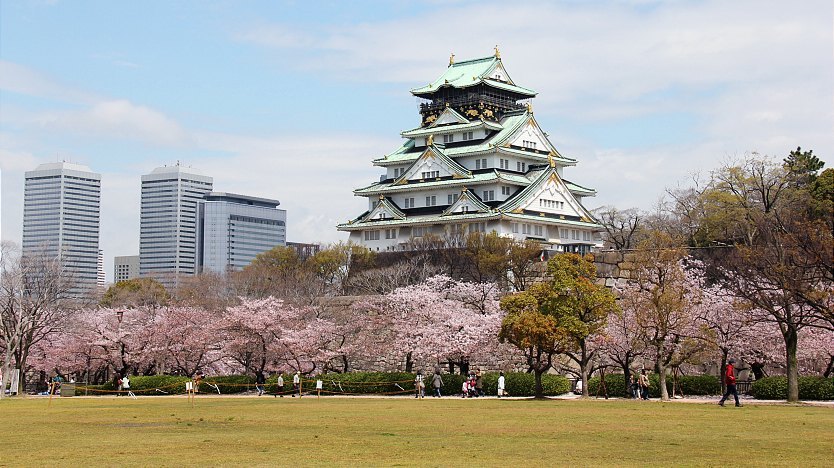
The Imperial Palace East Gardens (皇居東御苑, Kōkyo Higashi Gyoen) are part of the inner palace area and open to the public. They are the former site of Edo Castle’s innermost circles of defense, the honmaru (“main circle”) and ninomaru (“secondary circle”). None of the main buildings remain today, but the moats, walls, entrance gates and several guardhouses still exist.
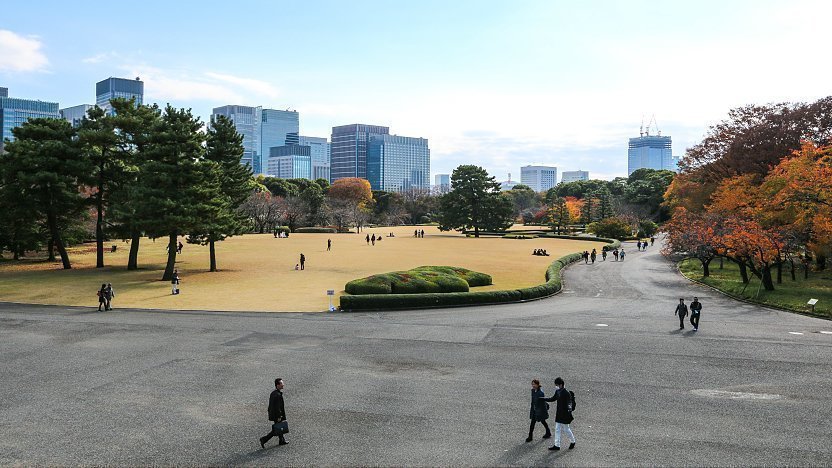
Planning Your Castle Visits with the Map
To help you plan your journey, we’ve created a map of Japanese castles that highlights the locations of these incredible historical sites. Whether you’re touring multiple castles in a region or planning a dedicated castle-hopping trip, our map allows you to see their proximity to one another, making it easier to structure your visit.
The map will come soon
Samurai spots
Hagi
Hagi, located by the coast in Yamaguchi Prefecture, is one of Japan’s best-preserved samurai towns. The town features traditional samurai residences, including the Shizuki Residence, where visitors can glimpse life in the Edo period. Hagi’s samurai district is an excellent place to explore, with its winding streets, historic buildings, and a pottery tradition that traces back centuries. Its role in the Meiji Restoration adds an important layer of historical significance, making it a must-visit for those interested in the samurai era and Japan’s modernization.
Kakunodate
Kakunodate, located in Akita Prefecture, is often referred to as the “Little Kyoto of the North” due to its preservation of traditional samurai culture. The town is known for its beautifully preserved samurai residences and the cherry blossom-filled streets in spring. Visitors can walk through the samurai district, where ancient houses and gardens reflect the elegant lifestyle of samurai families. Kakunodate is also home to a unique samurai museum, offering deep insights into the lives of Japan’s warrior class.
Matsumoto
Matsumoto, located in Nagano Prefecture, is famous for the striking Matsumoto Castle, also known as “The Black Crow Castle” due to its dark exterior. In addition to the castle, the city features a well-preserved samurai district, where visitors can walk through streets lined with old merchant houses and samurai residences. The surrounding area includes historical buildings that provide a glimpse into the feudal era, offering a comprehensive experience of Japan’s samurai culture.
Aizu-Wakamatsu
Aizu-Wakamatsu in Fukushima Prefecture is known for being the last stronghold of the samurai during the Boshin War. The town is dominated by the iconic Tsuruga Castle, where samurai defended their honor and way of life during the Edo period. Visitors can explore the samurai district, learn about the history of the Aizu clan, and visit historical sites such as the Aizu Bukeyashiki, a former samurai residence. The region’s turbulent history adds a profound layer of emotion to the experience, particularly for those interested in the final days of the samurai.
Hirosaki
Hirosaki, located in Aomori Prefecture, is famous for its well-preserved samurai district and the magnificent Hirosaki Castle, surrounded by over 2,500 cherry trees. The town’s samurai heritage is evident in the beautifully maintained samurai residences and gardens, such as the Tsugaru Clan’s family mansion. Hirosaki offers a peaceful yet historically rich atmosphere, where visitors can reflect on the life of the samurai while enjoying the scenic beauty, especially during the spring cherry blossom season.
Kumamoto
Kumamoto, in Kyushu, is famed for Kumamoto Castle, one of Japan’s largest and most formidable samurai fortresses. The castle, with its impressive stone walls and grand keep, is an enduring symbol of the samurai era. The city played a significant role in the Satsuma Rebellion, where the samurai made their last stand against the Imperial Army. Kumamoto’s samurai legacy is preserved not only through the castle but also through its many historical sites, including the Shimada Museum of Arts and various samurai residences.
Shimonoseki
Shimonoseki, located at the western tip of Honshu, is famous for its historical significance as the site of the Battle of Dannoura during the Genpei War. The town offers visitors the chance to explore the Shimonoseki Samurai District and learn about its connection to the samurai who fought in this pivotal battle. In addition to its warrior history, Shimonoseki boasts stunning views over the Kanmon Straits and offers many cultural experiences tied to its martial past.
Planning Your Journey
While Japan boasts an impressive array of castles and samurai towns, visiting all of them in one trip can be overwhelming. Each castle offers unique insights into the nation’s feudal past, and each samurai town has its own distinctive character. However, don’t feel the need to visit every single one. By using the map provided, you can easily plan your journey to combine the best castles with nearby sights, making your experience both enriching and manageable. Whether you prefer a historic castle with scenic gardens or a samurai town with local cultural treasures, there’s always a perfect pairing for your itinerary.